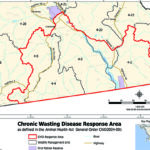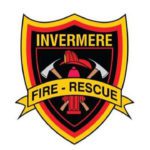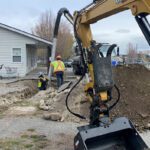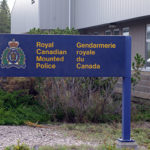Home »

Nation joins U.S. saying watershed pollution crosses the line
Canada must uphold its commitment to Ktunaxa ʔaqⱡsmaknik (Ktunaxa people) by participating in a joint submission to the International Joint Commission (IJC)
On June 7, the six governments of the Ktunaxa Nation met with United States government representatives to discuss watershed pollution from mining in Canada that ‘crosses the line’ into the United States.
Nasuʔkins (Chiefs) and council members assembled from the six Ktunaxa governments of Yaq̓it ʔa·knuqⱡi’it First Nation [Tobacco Plains]; ʔakisq̓nuk� First Nation [Windermere]; Yaqan Nuʔkiy [Lower Kootenay Band]; ʔaq̓am [Cranbrook]; K�upawiȼq̓nuk [Ksanka Band, Confederated Salish and Kootenay Tribes of the Flathead Indian Reservation]; and ʔaq̓anqmi [Kootenai Tribe of Idaho].
Joining them were representatives from the U.S. Department of State, the U.S. Environmental Protection Agency, and the U.S. Geological Survey. The group met on the Kootenai Tribe of Idaho’s reservation lands in Bonners Ferry, Idaho.
“We met with our sister Tribes and the U.S. Government to discuss the next steps in addressing the pollution issue in the Kootenay watershed,” said Nasuʔkin Heidi Gravelle, of Yaq̓it ʔa·knuqⱡi’it First Nation. “The governments of the Ktunaxa Nations formally asked the Government of Canada to participate in a joint reference to the International Joint Commission, which would help ensure the matter is addressed objectively.”
The Nation’s request has been outstanding since December of 2021. Despite encouraging early conversations with the Nation, by April of 2022, Global Affairs Canada indicated it would no longer be considering an IJC reference.
The Ktunaxa Nation responded swiftly with a letter calling on Canada to reverse its decision and resume engagement on the reference.
To date, no formal response to the Nation’s letter has been received.
In contrast, on June 8, the U.S. Department of State reaffirmed the U.S. government’s commitment for IJC involvement, saying it would underscore “… a commitment to strengthening Nation-to-Nation relationships by listening to Tribal priorities and respecting Tribal sovereignty.”
The Department also said the IJC would be a next step in meeting “the need for impartial recommendations and transparent communication.”
The IJC is an impartial body made up of three commissioners from each respective country. It provides the expertise and institutional independence to review, assess, and provide recommendations to address the pollution that affects the Kootenay watershed.
“It is the view of the Ktunaxa governments that the IJC reference is of great value,” said Nasuʔkin Gravelle.
“Generations of mining impacts in the Kootenay River watershed have led to a violation of the 1909 Boundary Waters Treaty between Canada and the U.S. Now we’re demanding meaningful dialogue in accordance with Canada’s own affirmations that ensure its laws and behavior are consistent with implementing the United Nations Declaration on the Rights of Indigenous Peoples Act.
“The missing piece here is Canada’s seeming refusal to participate in a joint reference submission to get the ball rolling on viable, science-based, solutions,” Nasuʔkin Gravelle said.
“It’s a disappointment, and a sad day for reconciliation, when progress on dealing with the pollution of our waterways is blocked by a federal government claiming to be ‘committed to reconciliation’.”
Meanwhile, the collaboration and respect the U.S. government has shown to the Indigenous governments did not go unnoticed.
Nasuʔkin Don Sam of ʔakisq̓nuk First Nation recognized the transparent and respectful dialogue as something Ktunaxa north of the 49th parallel want the Government of Canada to strive towards.
“There is both a science and a political problem here,” he said. “We are learning how those components are working together, and I look forward to us overcoming these challenges.”
Nasuʔkin Jason Louie, of Yaqan Nuʔkiy, shared the following remarks: “These waterways are known as the veins of the earth that connect our people. We travel by these waterways, from Yaqan Nuʔkiy down to this community [ʔaq̓anqmi]. All our communities are connected by the waterways. In human anatomy, if the veins are clogged then we are sick. You can, and you will, die. We are witnessing the death of these veins, these waterways. If these veins were clean, we would be in a different place in our communities.”
He added, “We consume the fish. At one time, we used to drink the water. We have never put waste into water, because water is life. The decisions that we make must be based in science, directed by science.”
Nasuʔkin Gravelle said the governments of the Ktunaxa Nation are calling on Canada to uphold its commitment to Ktunaxa ʔaqⱡsmaknik (Ktunaxa people) by participating in a joint submission to the IJC.
“Further, we call upon Canada to recommit to consent-based engagement with the Ktunaxa Nation on a joint IJC reference. There are vital reasons for it to proceed, including protecting the health of Ktunaxa ʔaqⱡsmaknik, restoring kyakxu (fish) health and water quality, and promoting transparent and Indigenous stewardship and ecosystem management.”
Lead image: On June 7, 2022, the six governments of the Ktunaxa Nation met with United States government representatives to discuss watershed pollution from mining in Canada that ‘crosses the line’ into the United States. They met in Bonners Ferry, and are calling on the Canadian government to participate with the U.S. on a joint reference to the International Joint Commission to address water quality issues. Photo courtesy of Ktunaxa Nation Council
Ktunaxa Nation







